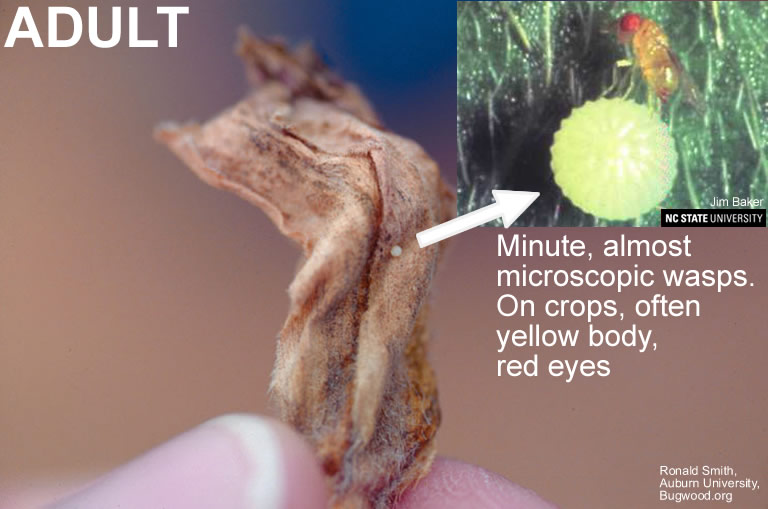Trichogramma Wasp
go.ncsu.edu/readext?563380
en Español / em Português
El inglés es el idioma de control de esta página. En la medida en que haya algún conflicto entre la traducción al inglés y la traducción, el inglés prevalece.
Al hacer clic en el enlace de traducción se activa un servicio de traducción gratuito para convertir la página al español. Al igual que con cualquier traducción por Internet, la conversión no es sensible al contexto y puede que no traduzca el texto en su significado original. NC State Extension no garantiza la exactitud del texto traducido. Por favor, tenga en cuenta que algunas aplicaciones y/o servicios pueden no funcionar como se espera cuando se traducen.
Português
Inglês é o idioma de controle desta página. Na medida que haja algum conflito entre o texto original em Inglês e a tradução, o Inglês prevalece.
Ao clicar no link de tradução, um serviço gratuito de tradução será ativado para converter a página para o Português. Como em qualquer tradução pela internet, a conversão não é sensivel ao contexto e pode não ocorrer a tradução para o significado orginal. O serviço de Extensão da Carolina do Norte (NC State Extension) não garante a exatidão do texto traduzido. Por favor, observe que algumas funções ou serviços podem não funcionar como esperado após a tradução.
English
English is the controlling language of this page. To the extent there is any conflict between the English text and the translation, English controls.
Clicking on the translation link activates a free translation service to convert the page to Spanish. As with any Internet translation, the conversion is not context-sensitive and may not translate the text to its original meaning. NC State Extension does not guarantee the accuracy of the translated text. Please note that some applications and/or services may not function as expected when translated.
Collapse ▲- Common Name: Trichogramma Wasps
- General Category: Parasitoid
- Taxonomic Classification: Hymenoptera: Trichogrammatidae
- Scientific Name: Many species
Description
These are minute, almost microscopic wasps that parasitize the eggs of other insects. Because of their size and habits Trichogramma escape the attention of most people. However, they are extremely important in pest management and are released on tens of millions of acres of crop and forest land around the world each year. They are ubiquitous and are found in many habitats, including aquatic habitats. These wasps are solitary so females hunt for either insect eggs directly, or for an insect that will lay eggs so it can hitch a ride and parasitize freshly laid eggs. Like most wasp species, they are parasitic on other insects and don’t defend large colonies, so they are harmless to humans.

Identification
Review the images for tips on how to identify these predators.
Adults
Minute insects approximately 0.5 – 1.0 mm long. The bodies of Trichogramma found in crops are often yellowy-brown with distinctly red eyes. If you happen to find an insect egg or egg mass in your yard, look for a tiny yellowy-brown insect on or near the eggs. This is the most likely way you would ever encounter a Trichogramma wasp.
Larvae
Because the grub-like larvae develop inside insect eggs, they cannot be seen. However, within a week of parasitism, eggs will turn black rather than hatch. When finished pupating, the adults will chew round holes in the tops of eggs to crawl out and once again search for hosts.
Value in Pest Management
Trichogramma wasps can contribute significantly to natural control of a variety of insect populations. They are probably the most widely released insect for pest management. They are raised in very large numbers by institutions and commercial enterprises around the world (see BIRC online Directory).
Origin and Distribution
Native, throughout the United States.



